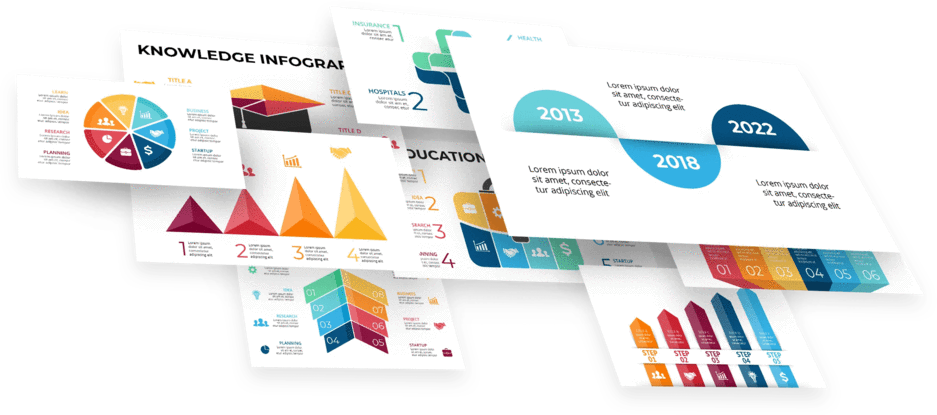What Is a Presentation? Everything You Need To Know
Apr 14, 2023
Do you want to know the basics of a presentation?
Learn to deliver a clear and concise presentation by discovering its essential elements and goals.
In this article, we will discuss the following:
-
What is a presentation?
-
Elements of a presentation
-
Parts of a presentation
-
Goals of a presentation
-
Frequently asked questions about presentations

What is a presentation?
A presentation is a communication method for delivering information to an audience. It typically involves a demonstration, illustration, or speech crafted to inform, persuade, inspire, or share a new idea.
Presentations require every speaker to deliver their message with compelling elements. To ensure effectiveness, you need to know the basic preparation steps. Moreover, as a speaker, you must carefully consider the methods of presenting the information.
Elements of a presentation
When delivering a presentation, you must convey your thoughts and ideas. As such, you must remember the following key points:
-
Presentation content and slides

Your presentation content must include key points and structured details. Moreover, it would be best to create slides with relevant and eye-catching elements, including images and videos. These visual details serve to support your message.
Creating visually appealing presentation slides shouldn't be difficult. Simple Slides has over 10,000 customizable templates, slides, and infographics that can suit your need!
-
Speakers' voice

Your tone, speed, pacing, volume, and pauses will contextualize your presentation. So, you must be careful with your voice and ensure it will deliver the right message.
Get inspiration from other superb presenters with engaging speaking voices. Even with tone subtleties, you can effectively capture your audience's attention while sharing important information.
-
Body language

Good posture, eye contact, and appropriate body movements are some ways you can exude confidence. Being conscious of your body language can directly influence how your audience will understand your message.
Take it from TED speaker and renowned social psychologist Amy Cuddy. She mentioned how body language could change how other people perceive you.
-
Authenticity

Knowing the purpose of your content is another key element of good presentations. The speaker's voice, body language, and the context of the presentation slides reflect authenticity. So, to capture your audience's attention and keep them engaged, you must be sincere.
It's crucial to build rapport and trust with your audience. One of the most common pieces of advice in public speaking is to stop glancing at the presentation slides. Instead, you should imagine the entire content while dialoguing and conversing with your audience.
Parts of a presentation
An effective presentation consists of three main parts: the introduction, the body, and the conclusion.
-
Introduction
Your presentation introduction must take 10 to 15% of your presentation time. Your opening prepares your audience to receive the message while drawing their interest.
We recommend reading our innovative presentation ideas to get inspiration on how to open your speech.
-
Body
The body of a presentation provides your core context. So, it would be best if you organized it logically and coherently. As the speaker, you must explain the subject and the relevant details. Oregon State University says the body takes 75% of the presentation.
Remember that the body consists of visual aids and key presentation elements. After all, this is where your audience will get the important details of your content.
-
Conclusion
Your conclusion takes 10% of your presentation time. So, it must be concise. Moreover, it must summarize the critical points of your message.
The conclusion provides information about what your audience can learn from your presentation.
The goal of a presentation
There are three main objectives of providing and conveying a formal presentation:
-
Share information
In the corporate setting, presentations inform their audience about any progress and new product within the organization.
-
To convince
Presentations also persuade the audience to take action or convince people to believe a piece of information. Whether you're speaking in front of a large or small group, your presentation must persuade each person in the event.
-
Build trust
Business presentations help build a good reputation for brands and organizations.
Final Thoughts on "What Is a Presentation?"
Learning the key elements of a good presentation can be helpful for anyone. With our tips, you can deliver an effective and persuasive speech. Moreover, you can speak with confidence while connecting with your audience.
Check out our how-to-do blogs for more updates about PowerPoint and Google Slides presentations! Remember to follow us on Facebook.
Frequently Asked Questions About The Presentation:
What are the factors affecting an effective presentation?
The factors affecting presentations are the speakers' appearance, visuals, audience analysis, communication environment, and more.
What are the different types of presentations?
Some presentation examples include:
- Visual
- Storytelling
- Instructional
- Freeform
- Coaching
- Takahashi-Lessig method
What are the categories of communication?
The four classifications of communication are:
- Verbal
- Non-verbal
- Visual representation
- Written communication
Related Articles:
Get A Free Sample of Our Award-Winning PowerPoint Templates + University
Get A Free Sample of Our Award-Winning PowerPoint Templates + University
Join our mailing list to receive the latest news and updates from our team.
Don't worry, your information will not be shared.
We hate SPAM. We will never sell your information, for any reason.




